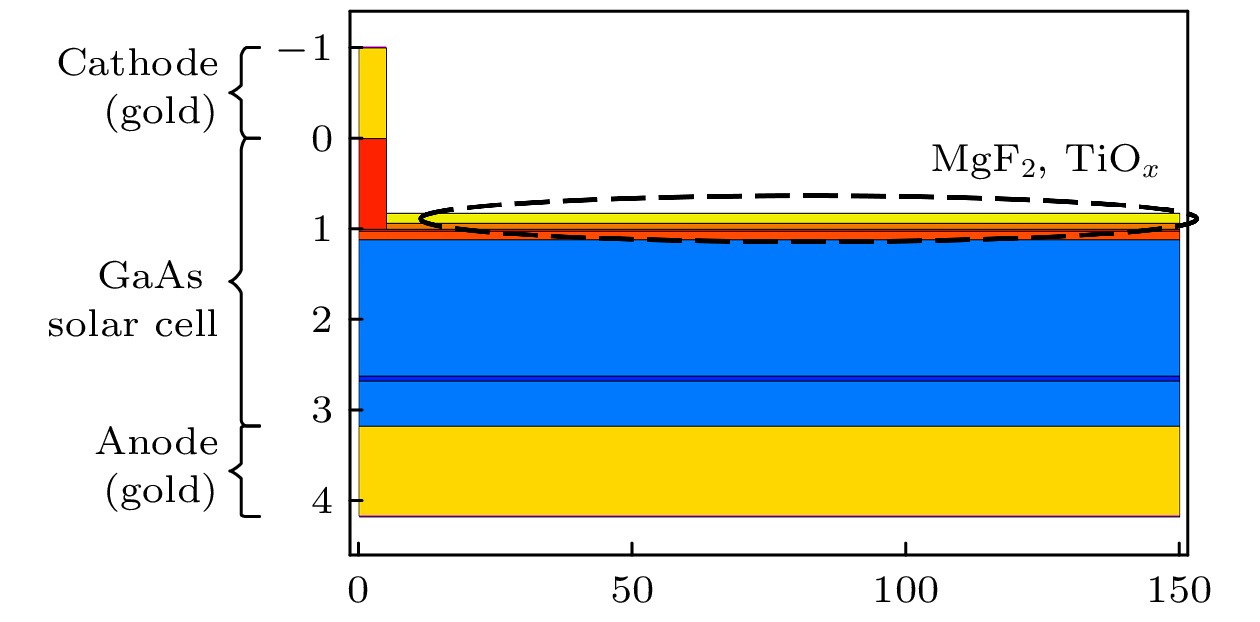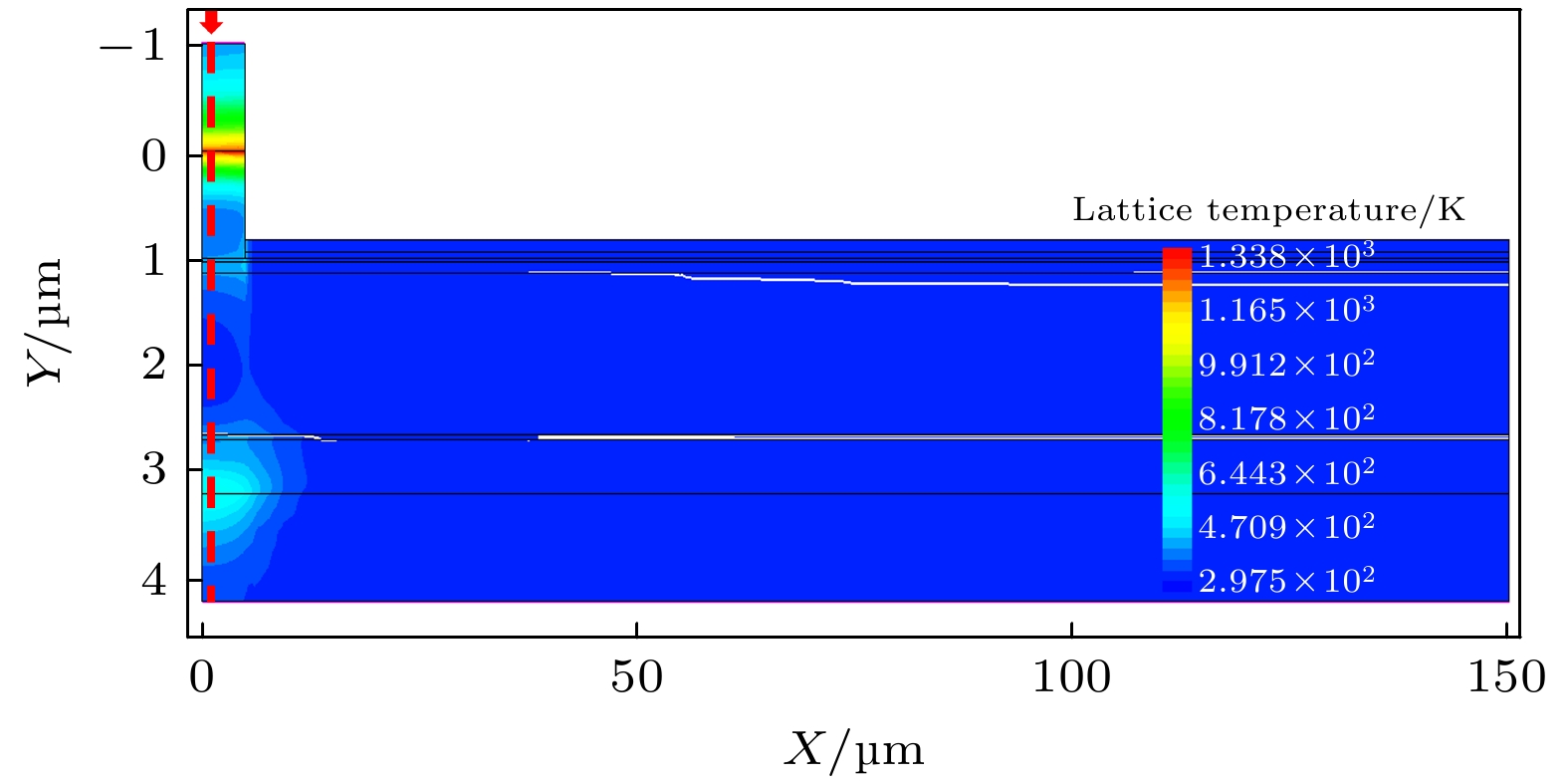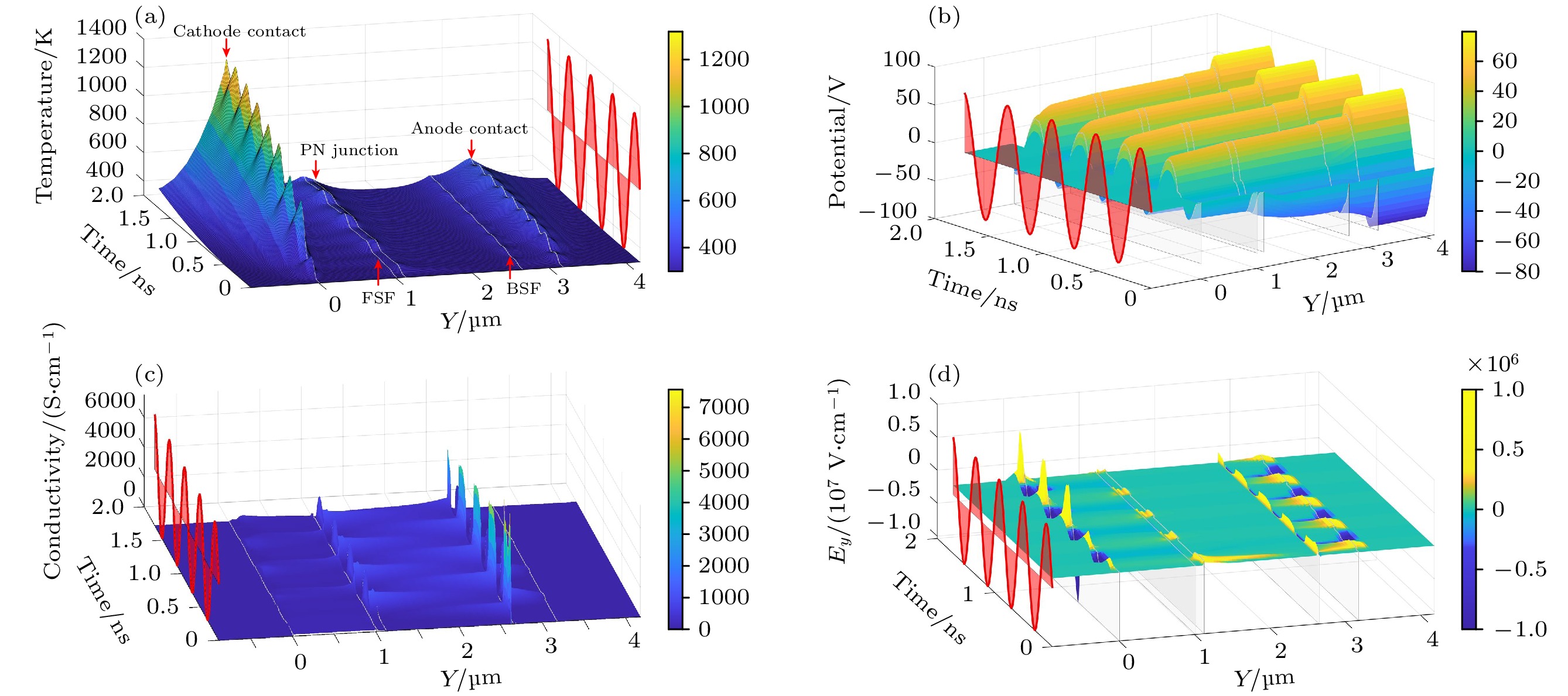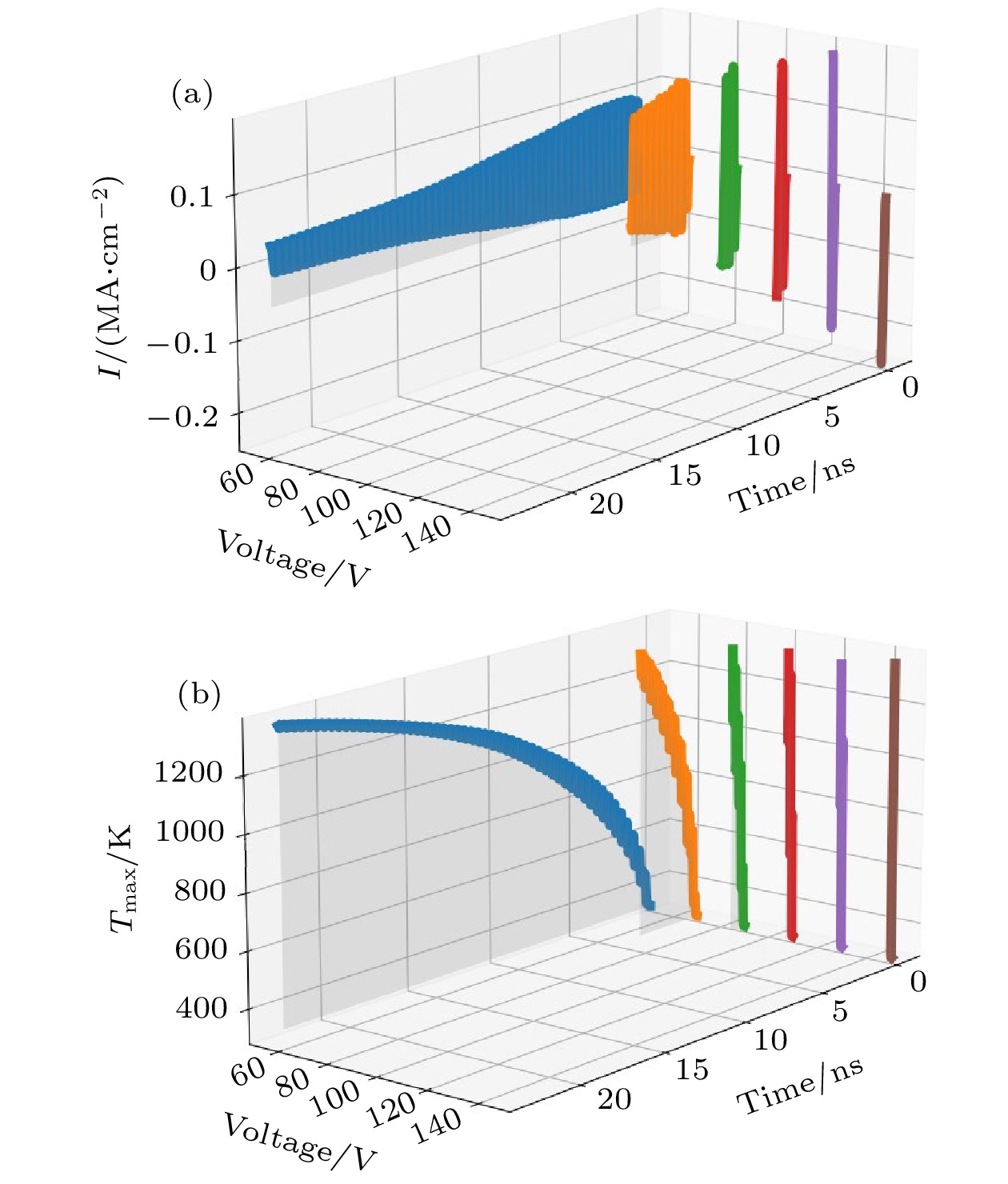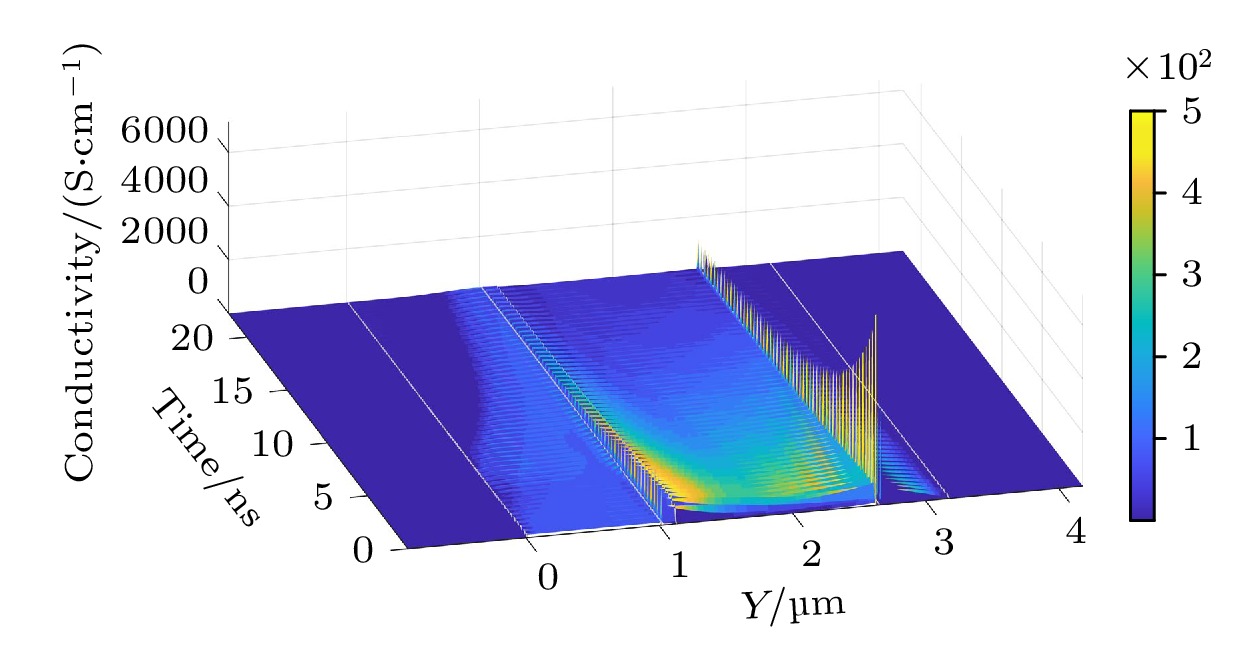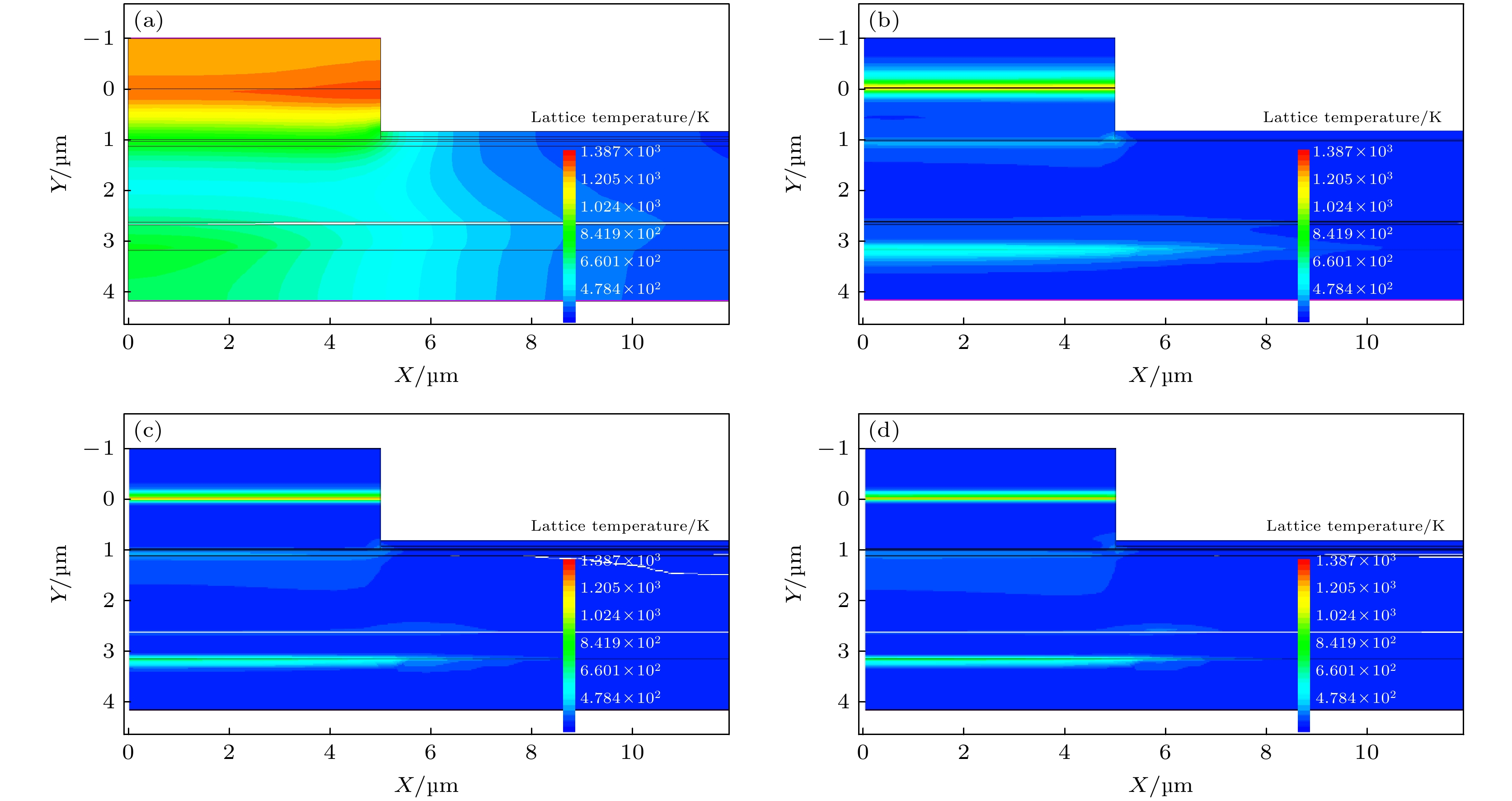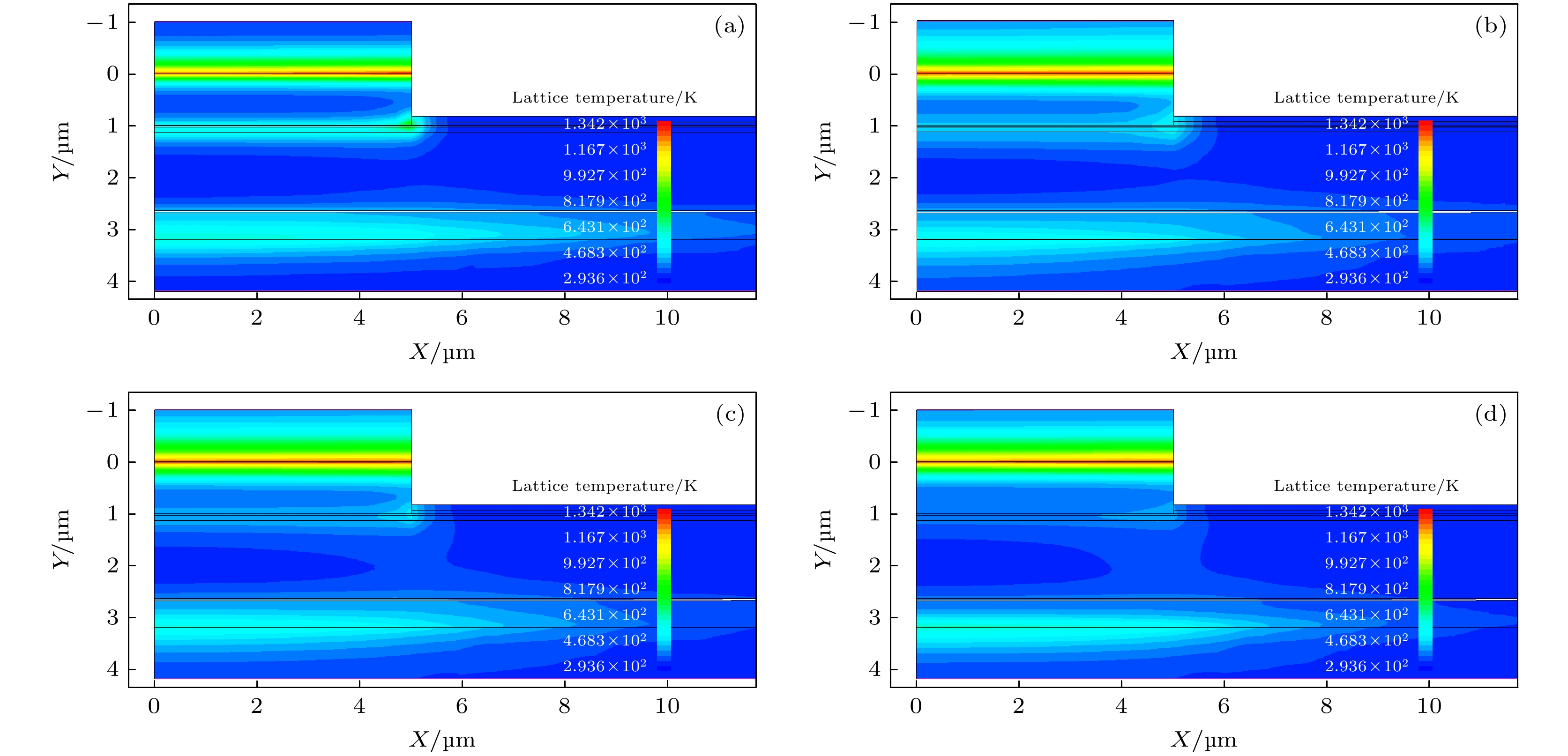-
The technology of space-based wireless power transfer presents a potential solution for supplying energy to spacecraft. However, this method transmits energy through high-power electromagnetic pulses, which may pose a potential threat to gallium arsenide (GaAs) solar cells. Currently, the damage mechanisms affecting solar cells in these conditions remain unclear. To solve this issue, the thermo-electrical coupled damage mechanism of single-junction GaAs solar cells is investigated using a comprehensive multiphysics simulation model in this work. The damage characteristics of the solar cells under varying voltage and frequency inputs are simulated and analyzed. Furthermore, the relationship between burnout time and both input voltage and frequency are investigated, and the differences in damage mechanisms observed at different frequencies are elucidated. The results indicate that due to high current density and contact resistance, burnout mainly occurs at the cathode electrode contacts. Additionally, the PN junction and the anode contact experience significant temperature elevations, which is more likely to affect the cell performance. By deepening our understanding of how high-power electromagnetic pulses damage space solar cells, this study will provide support for designing electromagnetic protection systems for spacecraft power architectures.
-
Keywords:
- electromagnetic pulses /
- gallium arsenide /
- solar cells /
- thermal damage
[1] 刘岩, 程伟, 孙犇, 王玮 2016 空间电子技术 13 44
 Google Scholar
Google Scholar
Liu Y, Cheng W, Sun B, Wang W 2016 Space Electron. Techn. 13 44
 Google Scholar
Google Scholar
[2] Yang Y, Zhang Y Q, Duan B Y, Wang D X, Li X 2016 Acta Astronaut. 121 51
 Google Scholar
Google Scholar
[3] 李军, 董士伟, 李洋, 王颖, 陈伟伟 2021 空间电子技术 15 8
 Google Scholar
Google Scholar
Li J, Dong S W, Li Y, Wang Y, Chen W W 2021 Space Electron. Techn. 15 8
 Google Scholar
Google Scholar
[4] 颜媛媛 2019 硕士学位论文 (南京: 南京航空航天大学)
Yan Y Y 2019 M. S. Thesis (Nanjing: Nanjing University of Aeronautics and Astronautics
[5] Barthel A, Sato S, Sayre L, Li J, Nakamura T, Ohshima T, Imaizumi M, Hirst L C 2024 J. Appl. Phys. 135 224505
 Google Scholar
Google Scholar
[6] Rahman T, Mansur A, Hossain L M, Rahman M, Ashique R, Houran M, Elavarasan R, Hossain E 2023 Energies 16 3706
 Google Scholar
Google Scholar
[7] 居培凯 2017 硕士学位论文 (南京: 南京理工大学)
Ju P K 2017 M. S. Thesis (Nanjing: Nanjing University of Science and Technology
[8] 王瀚翔 2022 硕士学位论文 (西安: 西安电子科技大学)
Wang H X 2022 M. S. Thesis (Xian: Xidian University
[9] Wang H X, Chai C C, Liu Y Q, Wu H, Zhang W, Li F X, Yang Y T 2021 Ieice Electron. Expr. 18 20210020
 Google Scholar
Google Scholar
[10] 孟祥瑞 2023 硕士学位论文 (西安: 西安电子科技大学)
Meng X Y 2023 M. S. Thesis (Xian: Xidian University
[11] Meng X R, Chai C, Li F, Sun Y, Yang Y 2022 J. Semicond. 43 112701
 Google Scholar
Google Scholar
[12] 樊晖煜 2022 硕士学位论文 (西安: 西安电子科技大学)
Fan Y H 2022 M. S. Thesis (Xian: Xidian University
[13] 张好彬 2024 硕士学位论文 (西安: 西安电子科技大学)
Zhang H B 2024 M. S. Thesis (Xian: Xidian University
[14] 何杰, 夏建白 主编 2017 半导体科学与技术(第2版) (北京: 科学出版社) 第110页
He J, Xia J B (eds.) 2017 Semiconductor Science and Technology (2nd Ed.) (Beijing: Science Press) p110
[15] 刘恩科, 朱秉升, 罗晋生编 2017 半导体物理学(第7版) (北京: 电子工业出版社) 第712页
Liu E K, Zhu B S, Luo J S 2017 Semiconductor Physics (7th Ed.) (Beijing: Publishing House of Electronics Industry) p712
[16] Ürmös A, Farkas Z, Dobos L, Nagy S, Nemcsics Á 2018 Acta Polytech. Hung. 15 99
 Google Scholar
Google Scholar
[17] 陈信佑 2012 博士学位论文 (桃园: 中原大学)
Chen X Y 2012 Ph. D. Dissertation (Taoyuan: Chung Yuan Christian University
[18] 张春福, 张进成, 马晓华, 冯倩编 2015 半导体光伏器件 (西安: 西安电子科技大学出版社) 第102页
Zhang C F, Zhang J C, Ma X H, Feng Q 2015 Semiconductor Photovoltaic Devices (Xian: Xidian University Press) p102
[19] SPS: Solar Power Satellite, Sasaki Susumu https://spacedream. sakura.ne.jp/SPS20.pdf [2024-7]
[20] 陶文铨 2019 传热学(第五版) (北京: 高等教育出版社) 第118页
Tao W Q 2019 Heat Transfer (5th Ed.) (Beijing: Higher Education Press) p118
[21] Wunsch D C, Bell R R 1968 IEEE Trans. Nucl. Sci. 15 244
 Google Scholar
Google Scholar
-
表 1 仿真模型中的太阳电池基本结构参数设置
Table 1. Structural parameters of the solar cell in the simulation model.
结构 参数设置 结构 参数设置 帽层 1 μm, 5×1018 cm–3 n型GaAs 基极 1.5 μm, 1×1017 cm–3 p型GaAs 前表面场 0.03 μm, 7×1018 cm–3 n型GaInP 背表面场 0.1 μm, 2×1018 cm–3 p型GaInP 发射极 0.1 μm, 2×1018 cm–3 n型GaInP 衬底 0.5 μm, 1×1017 cm–3 p型GaAs -
[1] 刘岩, 程伟, 孙犇, 王玮 2016 空间电子技术 13 44
 Google Scholar
Google Scholar
Liu Y, Cheng W, Sun B, Wang W 2016 Space Electron. Techn. 13 44
 Google Scholar
Google Scholar
[2] Yang Y, Zhang Y Q, Duan B Y, Wang D X, Li X 2016 Acta Astronaut. 121 51
 Google Scholar
Google Scholar
[3] 李军, 董士伟, 李洋, 王颖, 陈伟伟 2021 空间电子技术 15 8
 Google Scholar
Google Scholar
Li J, Dong S W, Li Y, Wang Y, Chen W W 2021 Space Electron. Techn. 15 8
 Google Scholar
Google Scholar
[4] 颜媛媛 2019 硕士学位论文 (南京: 南京航空航天大学)
Yan Y Y 2019 M. S. Thesis (Nanjing: Nanjing University of Aeronautics and Astronautics
[5] Barthel A, Sato S, Sayre L, Li J, Nakamura T, Ohshima T, Imaizumi M, Hirst L C 2024 J. Appl. Phys. 135 224505
 Google Scholar
Google Scholar
[6] Rahman T, Mansur A, Hossain L M, Rahman M, Ashique R, Houran M, Elavarasan R, Hossain E 2023 Energies 16 3706
 Google Scholar
Google Scholar
[7] 居培凯 2017 硕士学位论文 (南京: 南京理工大学)
Ju P K 2017 M. S. Thesis (Nanjing: Nanjing University of Science and Technology
[8] 王瀚翔 2022 硕士学位论文 (西安: 西安电子科技大学)
Wang H X 2022 M. S. Thesis (Xian: Xidian University
[9] Wang H X, Chai C C, Liu Y Q, Wu H, Zhang W, Li F X, Yang Y T 2021 Ieice Electron. Expr. 18 20210020
 Google Scholar
Google Scholar
[10] 孟祥瑞 2023 硕士学位论文 (西安: 西安电子科技大学)
Meng X Y 2023 M. S. Thesis (Xian: Xidian University
[11] Meng X R, Chai C, Li F, Sun Y, Yang Y 2022 J. Semicond. 43 112701
 Google Scholar
Google Scholar
[12] 樊晖煜 2022 硕士学位论文 (西安: 西安电子科技大学)
Fan Y H 2022 M. S. Thesis (Xian: Xidian University
[13] 张好彬 2024 硕士学位论文 (西安: 西安电子科技大学)
Zhang H B 2024 M. S. Thesis (Xian: Xidian University
[14] 何杰, 夏建白 主编 2017 半导体科学与技术(第2版) (北京: 科学出版社) 第110页
He J, Xia J B (eds.) 2017 Semiconductor Science and Technology (2nd Ed.) (Beijing: Science Press) p110
[15] 刘恩科, 朱秉升, 罗晋生编 2017 半导体物理学(第7版) (北京: 电子工业出版社) 第712页
Liu E K, Zhu B S, Luo J S 2017 Semiconductor Physics (7th Ed.) (Beijing: Publishing House of Electronics Industry) p712
[16] Ürmös A, Farkas Z, Dobos L, Nagy S, Nemcsics Á 2018 Acta Polytech. Hung. 15 99
 Google Scholar
Google Scholar
[17] 陈信佑 2012 博士学位论文 (桃园: 中原大学)
Chen X Y 2012 Ph. D. Dissertation (Taoyuan: Chung Yuan Christian University
[18] 张春福, 张进成, 马晓华, 冯倩编 2015 半导体光伏器件 (西安: 西安电子科技大学出版社) 第102页
Zhang C F, Zhang J C, Ma X H, Feng Q 2015 Semiconductor Photovoltaic Devices (Xian: Xidian University Press) p102
[19] SPS: Solar Power Satellite, Sasaki Susumu https://spacedream. sakura.ne.jp/SPS20.pdf [2024-7]
[20] 陶文铨 2019 传热学(第五版) (北京: 高等教育出版社) 第118页
Tao W Q 2019 Heat Transfer (5th Ed.) (Beijing: Higher Education Press) p118
[21] Wunsch D C, Bell R R 1968 IEEE Trans. Nucl. Sci. 15 244
 Google Scholar
Google Scholar
Catalog
Metrics
- Abstract views: 1909
- PDF Downloads: 38
- Cited By: 0














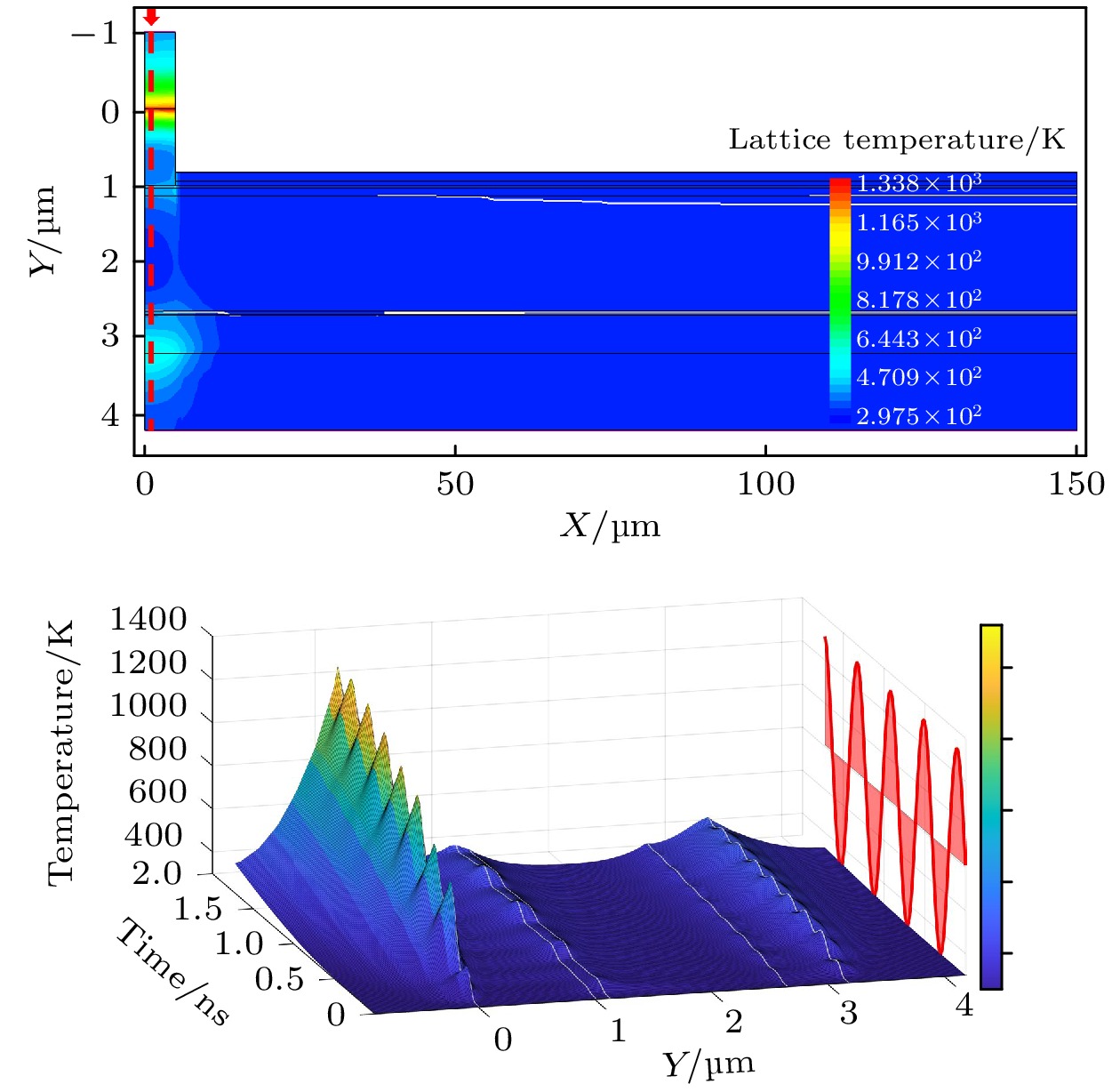
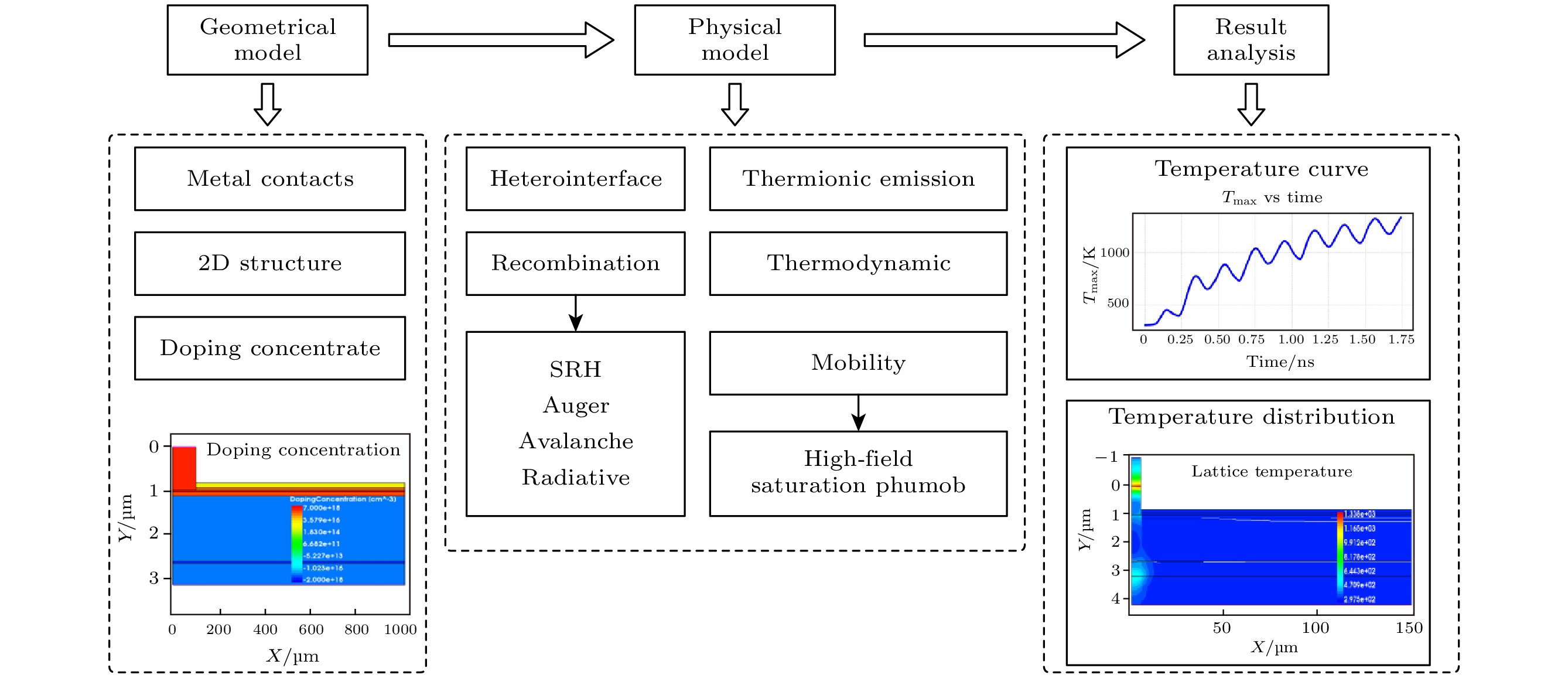
 DownLoad:
DownLoad:
